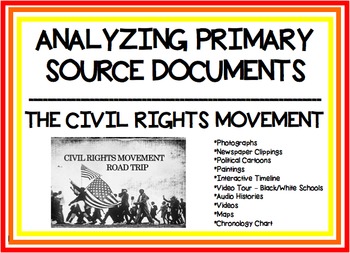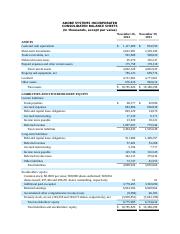
Back when we did everything on paper, or if you’re using a system like Excel for your bookkeeping and accounting, you used to have to pick and organize these numbers yourself. But because most accounting software these days will generate these for you automatically, you don’t have to worry about selecting reference numbers. Revenue accounts keep track of any income your business brings in from the sale of goods, services or rent.
QuickBooks Software
The difference is that most businesses will have many more types of accounts than your average individual, and so it will look more complex; however, the function and the concept are the same. Essentially, the chart of accounts should give anyone who is looking at it a rough idea of the nature of your business by listing all the accounts involved in your company’s day-to-day operations. For example, a company may decide to code assets from 100 to 199, liabilities from 200 to 299, equity from 300 to 399, and so forth.

As time goes by, you may find yourself wanting to create a new line item for each transaction, but doing so could litter your company’s chart and make it difficult to navigate. Current liabilities are classified as any outstanding payments that are due within the year, while non-current or long-term liabilities are payments due more than a year from the date of the report. In order to keep the number of accounts down to a manageable level, you may periodically review the list and close any accounts that are not fully utilized. Equity can fall into several accounts, reflecting different aspects of ownership in the company. Angela Boxwell, MAAT, brings over 30 years of experience in accounting and finance.
In the United States businessesand organizations widely use a standardized chart of accounts. A chart of accounts is organized using a hierarchical structure, starting with broad categories and then breaking them down into more specific subcategories. This structure generally follows a numerical system, with each account assigned a unique number. The numbering system typically groups accounts of the same type together, making it easier to navigate and maintain the chart. Angela has used and tested various accounting software packages; she is Xero-certified and a QuickBooks ProAdvisor. Experienced in using Excel spreadsheets for her bookkeeping needs and created a collection of user-friendly templates designed specifically for small businesses.
What is an Expense Report? (Excel Templates Included)
Don’t worry about the system you use, as you will soon get used to the account codes and where to add them. Each account allows you to track transactions within the software and produce financial statements, including Balance Sheet and Income statement (Profit and Loss). The foundation of any ERP implementation is developing a thoughtful CIM design, representing data definitions used across the enterprise. Once designed and implemented, a change in CoA structure might deliver benefits comparable to a complete reimplementation of the ERP application. Capturing data, financial and management reporting needs, and consolidation necessitates the right CoA design to get full value out of an ERP implementation.
Chart of accounts structure
- The chart of accounts is like a map of your business and its various financial parts.
- At the same time, the government came up with stricter regulations on how they should keep their finances in order.
- For example, balance sheets are typically used for asset and liability accounts, while income statements are used for expense accounts.
- The chart of accounts, at this point, serves as a structure under which the general ledger operates.
You can enter the VAT rates when setting up nominal codes for financial transactions in the UK. Equity accounts show the ownership of the business; the accounts might include owners and shareholders equity and retained earnings. Bookkeeping software is more flexible and often saves business time on the accounts. As you can see from the two accounting numbering examples, the system is different. Sage uses a different numbering system starting from 0010 and ending 9999.
Revenue appears at the top line of the income statement, showing the total amount of money earned from sales or other business activities. It reflects the company’s income statement: types and examples ability to generate income from its core operations, indicating its financial health and growth potential. Current assets are a company’s possessions it plans to convert into cash or use up within a year, like cash, inventory, and accounts receivable. Non-current assets are things a company owns but won’t convert to cash shortly, like property, equipment, and long-term investments. The standard chart of accounts requires you to present your finances divided into several groups – accounts – representing various aspects of your business activities. So, when setting up your accounting system, you create the COA in this order.
As the founder of Business Accounting Basics, she offers a wealth of free advice and practical tips to small business owners and entrepreneurs dealing with business finance complexities. The trial balance lists all the accounts and the debits due upon receipt what does it mean and should you use it and credits related to them. Expense Accounts – These are the main expenses of a business and include general office expenses, utilities, wages, travel and insurance.
Resources
Assets represent what a company owns, liabilities represent what a company owes, and owners’ equity represents the shareholders’ investment. You can usually find your assets on the balance sheet (one of the three standard business financial statements) that provides a snapshot of a company’s financial position at a specific moment. Assets are listed on the balance sheet in order of liquidity (the term to denote how easily and quickly an asset can be turned into cash without losing its value).
Use that information to allocate resources to more profitable parts of your business and cuts costs in areas that are lagging. They represent what’s left of the business after you subtract all your company’s liabilities from its assets. They basically measure how valuable the company is to its owner or shareholders. An easy way to repeal the lifo and lower of cost or market inventory accounting methods explain this is to translate it into personal finance terms. When you log into your bank, typically you’ll get a dashboard that lists the different accounts you have—checking, savings, a credit card—and the balances in each.
